 December 3, 2015 John E. Ross, KD8IDJ, Editor
| |||||||||
US Rep Greg Walden, W7EQI, Among Latest Amateur Radio Parity Act Cosponsors US Rep Greg Walden, W7EQI (R-OR), is among the latest House members to sign on as an Amateur Radio Parity Act of 2015 cosponsor. One of three radio amateurs in Congress, Walden chairs the House Energy and Commerce Committee's Subcommittee on Communications and Technology, tr H.R. 1301, the House version of the legislation. As of December 2, there were 117 cosponsors in the
US House and three cosponsors for S. 1685, the US Senate bill, which cleared the Senate Committee on Commerce, Science, and Transportation on November 18. ARRL President Kay Craigie, N3KN, said cosponsorship by Walden, the subcommittee chair, is a highlight of the bill's progress in the House. "Rep Walden and his subcommittee staff have been very helpful all along the way," she added. President Craigie also said it's important that ARRL members continue to write, call, or e-mail their members of Congress, including those who already have become cosponsors. "We want the members of Congress who signed on months ago to be reminded periodically that their help is important and appreciated by constituents," President Craigie said. "Keeping Capitol Hill's attention is not a one-and-done thing. Thanking our supporters is both good manners and good strategy." Other US House members who became H.R. 1301 cosponsors in November include three from Texas and two from Wisconsin: Reps Ron Kind (D-WI), Gwen Moore (D-WI), Gene Green (D-TX), Sam Johnson (R-TX), and Vela Filemon (D-TX) The bill calls on the FCC to apply its "reasonable accommodation" standard to private land-use restrictions. It would offer Amateur Radio operators an opportunity to negotiate with homeowners associations in subdivisions that now preclude the installation outdoor ham antennas. More information on the Amateur Radio Parity Act is available on the ARRL website. It's a Wrap: WRC-15 Concludes in Geneva World Radiocommunication Conference 2015 (WRC-15) concluded its deliberations on November 27 in Geneva, as heads of delegations signed the Final Acts revising the Radio Regulations -- the international treaty governing the use of radio frequency spectrum and satellite orbits. Some 3300 participants, representing 162 out of the International Telecommunication Union's (ITU) 193 member states, attended the 4-week conference. Another 500 or so participants, representing 130 other entities, including industry, also attended as observers. Festus Daudu of Nigeria chaired WRC-15.
"A great deal has been achieved in the last 4 weeks, and the results will have a major impact on the future of the telecommunication sector in general and radiocommunications in particular," ITU Radiocommunication Bureau (ITU-R) Director François Rancy said in a closing news release. WRC-15 addressed more than 40 topics related to frequency allocation and sharing. The conference reached consensus on a new worldwide secondary Amateur Radio allocation at 5351.5-5366.5 kHz, with a power limit of 15 W effective isotropic radiated power (EIRP). Some Region 2 countries, but not the US, will be permitted up to 25 W EIRP. With this action -- and despite conditions that are more restrictive than had been hoped at the start of the Conference -- the Amateur Service has obtained its first new global HF allocation since 1979. The 15 kHz band at 60 meters "will maintain stable communications over various distances, especially for use when providing communications in disaster situations and for relief operations," an ITU news release said. The new band will not become available for use until the FCC addresses the WRC-15 Final Acts in a rule making proceeding and establishes operating parameters.
Threats by the mobile telephone/broadband industry in the vicinity of 10 GHz and 24 GHz have been averted for the time being, but are expected to be raised again at WRC-19 and/or WRC-23. The 144 and 420 MHz bands were excluded from the WRC-19 agenda item addressing short-duration (3 years) small satellites. Agenda Item 1.12, addressing the Earth Exploration Satellite Service (10 GHz EESS), was approved at plenary with footnotes relevant to certain Middle East countries. The EESS allocation was tailored to avoid the Amateur-Satellite segment and poses no threat to terrestrial ham radio use of the band. The International Amateur Radio Union (IARU) team at WRC-15 also focused its efforts on tweaking the agenda for WRC-19. Agenda Item 1.1 will consider 50-54 MHz harmonization in Region 1. A proposed agenda item to align the 160 meter allocation in Region 1 with the rest of the world did not make the cut. Read more. -- Thanks to ITU and RSGB There's a New Ham in the House! US Rep Steve Pearce (R-NM) has become the third Amateur Radio licensee in the Congress. Pearce recently became KG5KIQ. He joins his House colleague, Rep Daniel Benishek, KB8TOW (R-MI), and Rep Greg Walden, W7EQI (R-OR). Pearce had reached out earlier this year to ARRL Rocky Mountain Division Director Brian Mileshosky, N5ZGT, and New Mexico Section Manager Ed James, KA8JMW, to find out more about ham radio.
"He said he had learned of ham radio and was interested in its utility for communicating with others wirelessly, especially at long distances on HF," Mileshosky recounted. More recently the congressman alerted Mileshosky and James that he would be passing through Albuquerque and wanted to meet with them to chat further about Amateur Radio. The get-together over coffee with Pearce, an aide, James, and Mileshosky lasted for "a very productive hour," Mileshosky said. On November 12, Pearce's aide contacted James to say that the Congressman has just arrived in Albuquerque and wanted to take the Technician license examination, if possible. "We notified Frank Warren, AB5WJ, whose VE team regularly conducts on-demand licensing exams," Mileshosky said. Three hours after our first indication that he was in town, the Congressman was taking his Technician license exam." The FCC granted Pearce's license on November 18. Revamped FCC Website Set to Debut The FCC's large-scale website redesign will roll out this month. The switch to the new site is set to happen on December 10 at 0100 UTC. "While the transition to the revamped site is expected to be completed almost instantaneously, there will be an ongoing process following this transition that will continue to involve user feedback, fixes by the FCC's Information Technology team, and content updates by policy bureaus and offices," the FCC said in a November 24 Public Notice.
"Extensive user research revealed how the FCC could improve the website's information architecture to make content easier to find," the Public Notice said. The FCC said its new website has been designed to operate on tablet and mobile device browsers with the display optimization based upon the device. When the new site comes online, the current FCC website will disappear. The FCC said web pages and files that have not already migrated to the new site will remain available, however, and existing bookmarks will be redirected to the appropriate content on the new site. Read more. ARRL Lab Acquires Keysight Digital Signal Generators The ARRL Laboratory has acquired two new Keysight N5182B MXG signal generators, which will replace two of the Lab's aging Marconi 2041 analog signal generators. ARRL Senior Test Engineer Bob Allison, WB1GCM, said the new equipment will expand the Lab's testing capabilities.
"Operating in a range from 9 kHz to 6 GHz, the MXG can generate both vector and analog RF signals at high performance levels, which will allow the ARRL Laboratory to develop new tests for measuring the performance of digital receivers and transmitters," Allison said. "The MXG can also function as a waveform generator and has the ability to download complex RF signals captured by the Lab's Keysight spectrum analyzer. This allows the Lab to capture both digital and analog signals and play them back as a signal source for test purposes." Keysight Engineer Tom Holmes, N8ZM, recently visited the ARRL Lab to discuss ideas regarding new tests with Allison. "Once Tom hooked the cables from the MXA to the MXG, I realized the potential the ARRL Lab now has," Allison said. "While our Marconi signal generators have been faithful to us for many, many years, they lacked the ability to generate digital signals needed for today's Amateur Radio equipment." The ARRL has expressed its thanks to Keysight for its assistance, and especially to Tom Holmes and Keysight's Field Territory Engineer Joe Carr. -- Thanks to Bob Allison, WB1GCM ARRL Northwestern Division Leadership Team Elected to New Terms ARRL Northwestern Division Director Jim Pace, K7CEX, and Vice Director Bonnie Altus, AB7ZQ, overcame challengers for their respective positions in the 2016-2018 election cycle. Ballots counted on November 20 at ARRL Headquarters showed that Pace defeated challenger William Balzarini, KL7BB, 2190 to 654 votes, while Altus outpolled challenger Delvin Bunton, N7QMT, 2061 to 776 votes. Pace and Altus have been declared elected. The count took place under the supervision of a representative of CohnReznick LLP, the League's independent auditor. Three tellers, appointed by the Ethics & Elections Committee, were New England Director Tom Frenaye, K1KI; ARRL Chief Financial Officer Barry Shelley, N1VXY, and ARRL CEO David Sumner, K1ZZ.
Pace, who had been elected Northwestern Division Vice Director in 2012, moved into the Director's chair in 2014, after former Director Jim Fenstermaker, K9JF, became ARRL Second Vice President. ARRL President Kay Craigie, N3KN, tapped Altus, then Oregon Section Manager, as Vice Director to succeed Pace, who previously had served as Western Washington SM. Incumbents in four other ARRL Divisions faced no challengers in the current election cycle and have been declared re-elected. They are Central Division Director Dick Isely, W9GIG, and Vice Director Kermit Carlson, W9XA; Hudson Division Director Mike Lisenco, N2YBB, and Vice Director Bill Hudzik, W2UDT; New England Division Director Tom Frenaye, K1KI, and Vice Director Mike Raisbeck, K1TWF, and Roanoke Division Director Dr Jim Boehner, N2ZZ, and Vice Director Bill Morine, N2COP. New terms of office for all successful candidates begin at noon on January 1, 2016. This election cycle marked a return to paper ballots. The ARRL Ethics and Elections Committee decided in January to return to using solely paper ballots, after instituting a hybrid paper and electronic balloting process in the fall of 2012. Online balloting proved popular among those who took advantage of it, but overall voter participation declined significantly. See the August 2015 issue of QST, p 78, for more information. The Radio Amateur's Workshop Explains Workshop Essentials A new ARRL book, The Radio Amateur's Workshop, by Joel R. Hallas, W1ZR, is now available from the ARRL Store, ARRL publication dealers, and as an e-book for the Amazon Kindle.
The Radio Amateur's Workshop (ARRL Item No. 0482, ISBN: 978-1-62595-016-1) retails for $22.95, special ARRL Member Price $19.95. To order online, visit the ARRL Store or order by phone, toll free in the US, (888) 277-5289. December ARRL Operating Events Offer the Lows and the Highs For veteran contesters and newcomers alike, December offers two of the most popular operating events of the fall "contest season" -- The ARRL 160 Meter Contest, December 4-6, and the ARRL 10 Meter Contest the following weekend, December 12-13. Both contests offer an opportunity to appreciate the diversity and range of the HF bands available.
On this challenging band, it's all about your antenna and teasing desired signals out of the noise. Running 100 W into a compromise antenna of a shortened dipole or an inverted L or vertical with just a few radials, you can expect to work a number of states, if you put in some effort. High power is also an option. In times of scant sunspots, 160 can come alive with signals from other continents. From a low-noise location, it's possible to work the world with a wire vertical antenna, such as an inverted L, coupled with radials -- the more the merrier. Separate low-noise receiving antennas such as Beverages are popular on this band. Top Band operation can be addicting for its combination of challenges, rewards, and variability.
At the other end of the HF spectrum 10 meters can be a "counterpoise" to 160. Most activity will be during the daylight hours. The object is for amateurs worldwide to exchange contact information with as many stations as possible on 10 meters. The band is more likely to be open in high-sunspot years, but 10 meters can be surprising. Gain antennas for 10 can be built fairly easily, since they're relatively small (a 10 meter dipole is on the order of 16.5 feet). Building a small Yagi for 10 meters is not difficult. If 10 meters is open, signals from around the world can be quite strong, and contest contacts are fast and exciting. The ARRL 10 Meter Contest encompasses CW and SSB operation -- you can operate either one or operate both, which can be a wonderful way to avoid mode burnout. Effective use of one good 10 meter opening during an otherwise closed-band weekend could place you among the regional score leaders. Both of these events offer a variety of entry categories and power levels, from QRP to legal limit. -- Thanks to The ARRL Contest Update/Brian Moran, N9ADG Special Event W1Q to be Active in ARRL 160 Meter Contest Special Event station W1Q is now on the air until December 15, to celebrate QST's 100th anniversary. The first issue of QST was published in ARRL COO Harold Kramer, WJ1B, and volunteer operators will be on the air on various bands and modes throughout the month. This is not an official ARRL operation, and Kramer will handle all details, QSL cards, and LoTW entries. He will post additional information on his QRZ.com page under WJ1B. -- Thanks to Harold Kramer, WJ1B WX4NHC Will Be On the Air for SKYWARN Recognition Day on Saturday, December 5 WX4NHC, the Amateur Radio station at the National Hurricane Center in Miami, will take part in SKYWARN Recognition Day (SRD) on Saturday, December 5. The annual on-the-air event gets under way at 0000 UTC (Friday, December 4 in US time zones) and concludes at 2400 UTC. WX4NHC will be active from 1400 UTC until 2300 UTC. The Hurricane Center ham station has participated in every SKYWARN Recognition Day since its inauguration 16 years ago. WX4NHC will take advantage of the event for operator training.
Cosponsored by ARRL and the National Weather Service (NWS), SKYWARN Recognition Day pays tribute to Amateur Radio operators for the vital public service they perform. Registration is still open for stations planning to participate from a NWS Forecast Office; a list of NWS participating offices is on the NWS SKYWARN Recognition Day web page. During SKYWARN Recognition Day amateur stations exchange contact information with as many National Weather Service-based stations as possible on SSB, FM, CW, RTTY, and AM on the 80, 40, 20, 15, 10, 6, and 2 meter bands, as well as 70 centimeters. Repeater contacts are permitted. Stations exchange call signs, signal reports, location, and a one- or two-word description of the weather (eg, sunny, partly cloudy, windy, rainy). Procedures are detailed on the NOAA SRD web page. The volunteer SKYWARN program comprises nearly 290,000 trained severe weather spotters -- many of them radio amateurs -- who identify severe storms and provide NWS forecasters with reports of local weather conditions during severe weather events. To learn more, visit the SKYWARN Recognition Day website. Amateur Radio Provides Communication for Oklahoma Veterans Day Parade Midwest City, Oklahoma's fourth annual Veterans Day Parade was a success, due in part to the communication support that Mid-Del Amateur Radio Club (MDARC) volunteers provided. Amateur Radio met communication needs at multiple staging areas, along the parade route, at the incident command post, and for the reviewing stand. Working closely with the City of Midwest City Emergency Management Office Communications Coordinator and the Midwest City police and fire departments, the ham volunteers were able to cover the large area and a parade route of about 2 miles. The Midwest City Communications Coordinator is Scott Walsh, N5NYS. The event featured a flyover by the Warbirds, a vintage World War II aircraft group from Tulsa. Heading up the team of 17 ham volunteers was Donald Ohse, W5DRO, whose experience includes working with the city and the Oklahoma County Sheriff's Office as a volunteer.
"By using Amateur Radio, we were able to provide communications and resources that could commit to many areas that normally would not have been covered due to manpower constraints," Ohse said. "For the past 3 years, we have been providing a radio amateur at the reviewing stand, where the emcee for the event is located, and we also place a spotter about 200 yards from the reviewing stand to communicate back to the reviewing stand, if a parade participant is out of order," he noted. "This was very helpful, so the emcee would not announce the wrong entry." Ohse said the parade's multiple staging areas presented another challenge. Using several simplex frequencies, the ham volunteers were able to reduce radio traffic on the main public safety net frequency, leaving it available for more important uses. Read more. Richard A. Strand, KL7RA, SK Well-known contester and station builder Richard Strand, KL7RA, of A radio astronomer, Strand was an ARRL Life Member. KL7RA was a regular in the ARRL November Sweepstakes, handing out the relatively rare Alaska Section multiplier, and he had hoped to recover in time for the 2015 ARRL November Sweepstakes events. He also was active in DX contests. Strand was a Volunteer Examiner with the Anchorage Amateur Radio Club VEC, and he had been a contributor to The ARRL Handbook. UK Antenna Columnist and Author Peter Dodd, G3LDO, SK Antenna columnist and author Peter Dodd, G3LDO, of East Preston, Littlehampton, England, died on November 17. He was 83. Dodd was well known for his antenna expertise and was a long-time contributor to the Radio Society of Great Britain's journal, RadCom, for which he edited the "Antennas" column. He also wrote several articles for QST and QEX. In addition he was the author of several books According to Mike Dennison, G3XDV, Dodd was very active in the early days of low-frequency experimentation and made the first two-way contact on 73 kHz and was part of a very early transatlantic contact on 136 kHz. "He compiled several early collections of articles on low-frequency operating, including The LF Experimenter's Handbook, which was published by the RSGB in 2000," Dennison said. Other titles by Dodd include Building Successful HF Antennas and Backyard Antennas, which remain in print. In Brief...
. . . . . . .
The K7RA Solar Update Tad Cook, K7RA, Seattle, reports: Solar indicators dropped this week, with average daily sunspot numbers at 41.6 from November 26 through December 2, down from 62.7 in the previous 7 days. Average daily solar flux dipped 18 points, from 115.2 to 97.2. A week ago the predicted average daily solar flux for the same period was 111.4, more than 14 points above the actual outcome.
Predicted solar flux is 100 on December 3-4; 95 and 90 on December 5-6; 85 on December 7-9; 100 on December 10; 115 on December 11-13; then 110, 105, and 100 on December 14-16; 105 on December 17-18; 110 on December 19-20; 105 on December 21, and 100 on December 22-26. The lowest predicted solar flux is 95 for December 27. Predicted planetary A index is 5, 8, and 6 on December 3-5; 18, 24, and 22 on December 6-8; 16, 22, and 10 on December 9-11; 8 on December 12-15; then 10 and 8 on December 16-17; 5 on December 18-23, and 8 on December 24-26. The next period of unsettled to active geomagnetic conditions is December 28, with a predicted planetary A index of 25. Sunspot numbers for November 26 through December 2 were 56, 48, 36, 47, 51, 27, and 26, with a mean of 41.6. The 10.7 centimeter flux was 103.9, 98.9, 96.6, 95.5, 95.7, 94.6, and 95.3, with a mean of 97.2. Estimated planetary A indices were 3, 7, 8, 9, 19, 14, and 9, with a mean of 9.9. Estimated mid-latitude A indices were 2, 4, 5, 7, 10, 11, and 7, with a mean of 6.6. In this Friday's bulletin look for an updated forecast and reports from last weekend's CQ World Wide CW DX Contest. Send me your reports and observations. Just Ahead in Radiosport
See the ARRL Contest Calendar for more information. Upcoming ARRL Section, State, and Division Conventions and Events
Find conventions and hamfests in your area.
. . .
Subscribe to...
Free of charge to ARRL members...
| |||||||||
.jpg)
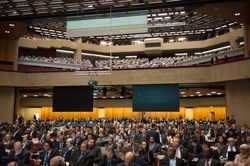

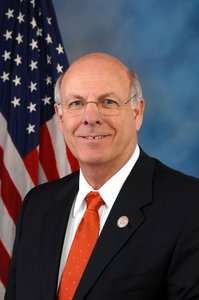
.jpg) The FCC said the new website has been designed to provide "better functionality, an improved design, and better searchability and navigability." Earlier this year the Commission's IT Department opened a
The FCC said the new website has been designed to provide "better functionality, an improved design, and better searchability and navigability." Earlier this year the Commission's IT Department opened a 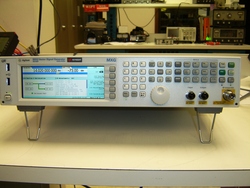

 The Radio Amateur's Workshop is your guide to setting up and maintaining an efficient at-home laboratory and work station. It describes the tools you'll need for projects ranging from assembling electronic kits, to building and testing antennas. Subsequent chapters look at a wide variety of workshop test equipment, including an explanation of how various instruments can be used to develop, fabricate, and evaluate projects. Become part of the do-it-yourself movement. Discover fun and creative ways to use radio technology at your workshop today.
The Radio Amateur's Workshop is your guide to setting up and maintaining an efficient at-home laboratory and work station. It describes the tools you'll need for projects ranging from assembling electronic kits, to building and testing antennas. Subsequent chapters look at a wide variety of workshop test equipment, including an explanation of how various instruments can be used to develop, fabricate, and evaluate projects. Become part of the do-it-yourself movement. Discover fun and creative ways to use radio technology at your workshop today. Often called "Top Band," 160 meters -- actually a medium-wave band -- is the lowest frequency band currently available for contest use. While some Top Band stalwarts will operate day and night on contest weekend, operation for this event typically takes place starting at dusk and into the nighttime hours, and it's an all-CW event. This is mainly a contest where US and Canadian stations work one another and the rest of the world, because the rules do not permit DX-to-DX contacts.
Often called "Top Band," 160 meters -- actually a medium-wave band -- is the lowest frequency band currently available for contest use. While some Top Band stalwarts will operate day and night on contest weekend, operation for this event typically takes place starting at dusk and into the nighttime hours, and it's an all-CW event. This is mainly a contest where US and Canadian stations work one another and the rest of the world, because the rules do not permit DX-to-DX contacts.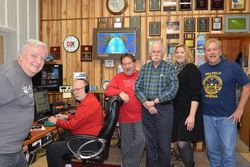
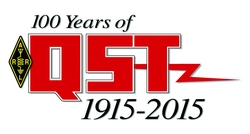 December 1915. W1Q will be active in the
December 1915. W1Q will be active in the 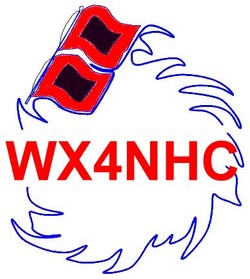 "We will try to stay on the recognized Hurricane Watch Net frequency of 14.325 MHz most of the time and announce when we QSY," said Assistant WX4NHC Coordinator Julio Ripoll, WD4R, at the NHC. WX4NHC will also be active on a wide variety of bands and modes, from HF through UHF.
"We will try to stay on the recognized Hurricane Watch Net frequency of 14.325 MHz most of the time and announce when we QSY," said Assistant WX4NHC Coordinator Julio Ripoll, WD4R, at the NHC. WX4NHC will also be active on a wide variety of bands and modes, from HF through UHF..JPG)
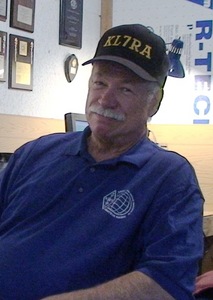 Kenai, Alaska, died on November 20 after suffering a heart attack a couple of weeks earlier. He was 69.
Kenai, Alaska, died on November 20 after suffering a heart attack a couple of weeks earlier. He was 69.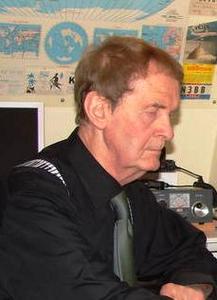 on antennas and on low-frequency operating.
on antennas and on low-frequency operating.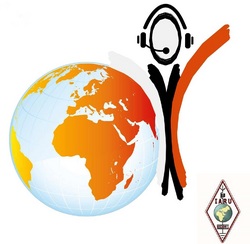 December is "Youngsters on the Air Month" in IARU Region 1:
December is "Youngsters on the Air Month" in IARU Region 1:  "Year of Pluto" Special Event Set for December: Pluto and the City of Flagstaff, Arizona, are forever linked in history. On February 18, 1930, astronomer Clyde Tombaugh discovered Pluto at Lowell Observatory in Flagstaff, using a blink comparator and photographic plates. The New Horizons probe reached the Pluto system 85 years later last July, imaging Pluto, its largest moon Charon, and the other small moons. Pluto has since been downgraded to "
"Year of Pluto" Special Event Set for December: Pluto and the City of Flagstaff, Arizona, are forever linked in history. On February 18, 1930, astronomer Clyde Tombaugh discovered Pluto at Lowell Observatory in Flagstaff, using a blink comparator and photographic plates. The New Horizons probe reached the Pluto system 85 years later last July, imaging Pluto, its largest moon Charon, and the other small moons. Pluto has since been downgraded to "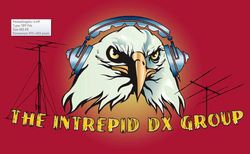 Intrepid-DX Group Seeks Nominations for "Intrepid Spirit" Award: The
Intrepid-DX Group Seeks Nominations for "Intrepid Spirit" Award: The 
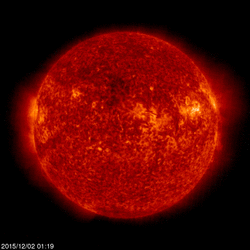 Average daily planetary A index was 9.9, while average daily mid-latitude A index was 6.6, more than double the two figures for the previous week, 4.1 and 3.1, respectively. But there were no days with high geomagnetic activity. The most was on Monday and Tuesday, with planetary A index at 19 and 14 indicating moderately unsettled conditions.
Average daily planetary A index was 9.9, while average daily mid-latitude A index was 6.6, more than double the two figures for the previous week, 4.1 and 3.1, respectively. But there were no days with high geomagnetic activity. The most was on Monday and Tuesday, with planetary A index at 19 and 14 indicating moderately unsettled conditions.







